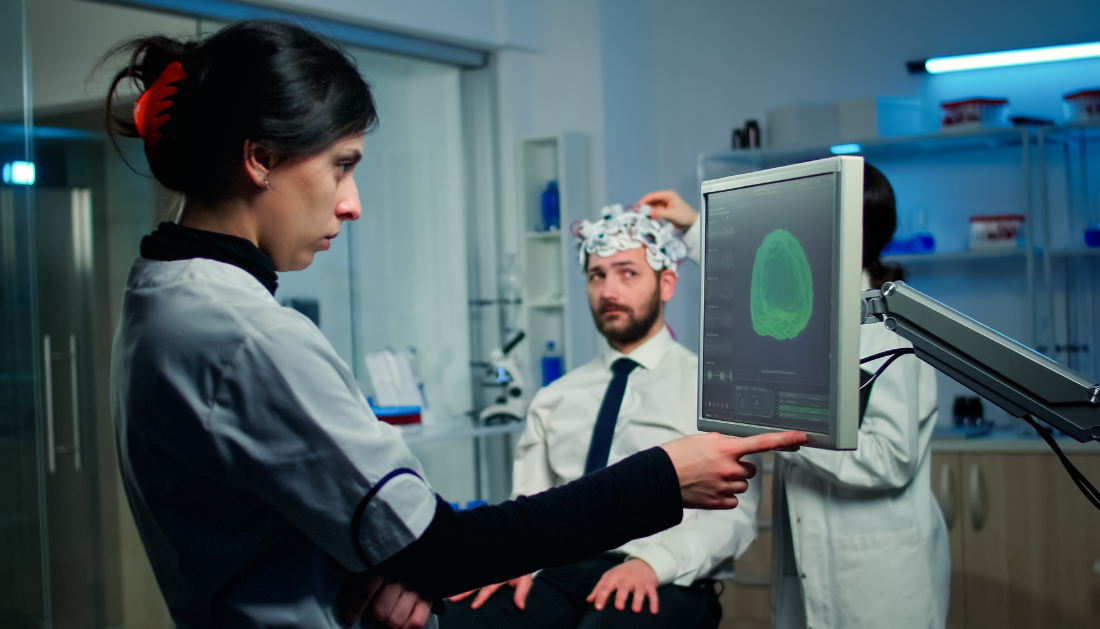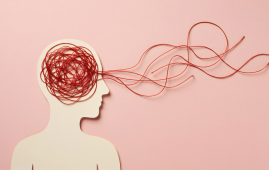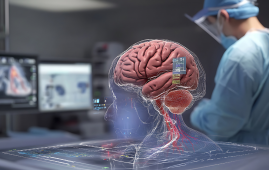

To estimate brain age using EEG scans, researchers devised an AI-based approach that may help diagnose neurological illnesses early on. Comparing this technology to more conventional MRI-based techniques results in a less costly and invasive evaluation.
By analyzing EEGs, the AI can detect possible early aging and provide a proactive strategy to reduce the risks linked with age-related illnesses such as Parkinson’s and dementia.
Important Details:
- Creative Application of EEG: The AI method determines a person’s brain age by using EEG, which is a less expensive and more accessible technology than MRIs.
- Early Identification and Handling: The technology can assist in the early intervention of disorders such as Parkinson’s disease and moderate cognitive impairment by identifying signs of premature aging.
- Widespread Use: Due to its efficiency and cost, the technology can be used for routine public health screenings as well as tracking the results of medical and lifestyle interventions.
Drexel University is the source.
People’s brains also deteriorate with age. However, there is a chance that an early-aging brain will develop age-related conditions like Parkinson’s disease, dementia, or moderate cognitive impairment. Premature brain aging could be treated before major health issues arise if “brain age” could be computed with ease.
Based on electroencephalogram (EEG) brain scans, researchers at Drexel University’s Creativity Research Lab have created an artificial intelligence method that can accurately determine a person’s brain age. The device may contribute to increased accessibility to early, routine screening for degenerative brain illnesses.
Under the direction of Drexel’s College of Arts and Sciences professor John Kounios, PhD, and director of the Creativity Research Lab, the research team used machine learning, a form of artificial intelligence, to estimate a person’s brain age in a manner akin to estimating someone else’s age based on their physical appearance.
“When you meet someone for the first time, you might try to estimate his or her age: Is their hair grey? Do they have wrinkles?” said Kounios.
“When you learn how old they really are, you might be surprised at how young or old they look for their age and judge that they are aging more quickly or more slowly than expected.”
Nowadays, MRI scans of healthy individuals’ brains can be used by machine learning algorithms to identify characteristics that indicate a person’s age in the brain.
A machine-learning algorithm can be trained to estimate an individual’s brain age based on his or her MRI by feeding it numerous MRIs of healthy brains and the chronological ages of each of those brains.
Kounios and his associates created the technique for employing EEGs rather than MRIs using this framework.
According to Kounios, this can be viewed as an indicator of overall brain health. It is no reason for alarm if a brain appears younger than that of other healthy individuals of the same age. However, a “brain-age gap”—a phenomenon where a person’s brain seems older than that of their similarly aged, healthy peers—may exist.
According to Kounios, a person may be more susceptible to age-related neurological illnesses if they have a history of diseases, toxins, poor nutrition, injuries, or other conditions that could induce a brain-age gap.
Explore more Neuro-related insights at Global Neurology Summit 2024.
In the medical field, brain age estimates are not commonly employed, despite being an important health sign.
“Brain MRIs are expensive and, until now, brain-age estimation has been done only in neuroscience research laboratories,” said Kounios. “But my colleagues and I have developed a machine-learning technology to estimate a person’s brain age using a low-cost EEG system.”
A recording of a person’s brain waves is called electroencephalography, or EEG. Compared to an MRI, this treatment is less costly and invasive, requiring the patient to wear a headset for a short while. According to Kounios, a machine learning algorithm that can determine brain age using EEG images rather than MRIs may be a more widely available method of screening for brain health.
“It can be used as a relatively inexpensive way to screen large numbers of people for vulnerability to age-related. And because of its low cost, a person can be screened at regular intervals to check for changes over time,” Kounios said.
“This can help to test the effectiveness of medications and other interventions. And healthy people could use this technique to test the effects of lifestyle changes as part of an overall strategy for optimizing brain performance.”
The Canadian healthcare provider DiagnaMed Holdings has received a license from Drexel University to use its brain-age estimation technology in a new digital health platform.
Together with Kounios, the research was assisted by Jessica Fleck, PhD, of Stockton University, and Fengqing Zhang, PhD, and Yongtaek Oh, PhD, of Drexel University.
For more information: Brain-age estimation with a low-cost EEG-headset: effectiveness and implications for large-scale screening and brain optimization, Frontiers in Neurogenomics, https://doi.org/10.3389/fnrgo.2024.1340732
more recommended stories
 36-Week Pre-eclampsia Screening May Reduce Term Risk
36-Week Pre-eclampsia Screening May Reduce Term RiskA New Preventive Strategy for Term.
 Cardiovascular Risk and Sudden Cardiac Death in Diabetes
Cardiovascular Risk and Sudden Cardiac Death in DiabetesRising Sudden Cardiac Death (SCD) Risk.
 Poor Kidney Function and Alzheimer’s Biomarkers Explained
Poor Kidney Function and Alzheimer’s Biomarkers ExplainedPoor kidney function may influence levels.
 Perinatal Mental Health Challenges Highlighted in New Study
Perinatal Mental Health Challenges Highlighted in New StudyMental Health Challenges in New Parents:.
 Walking Speed Before Hip Replacement Predicts Recovery
Walking Speed Before Hip Replacement Predicts RecoveryNew Evidence Points to a Simple,.
 Neuroblastoma Drug Combo Extends Survival in Models
Neuroblastoma Drug Combo Extends Survival in ModelsA Promising Shift in High-Risk Neuroblastoma.
 Safer Allogeneic Stem Cell Transplants with Treg Therapy
Safer Allogeneic Stem Cell Transplants with Treg TherapyA new preclinical study from the.
 How Soybean Oil Impacts Weight Gain and Metabolism
How Soybean Oil Impacts Weight Gain and MetabolismWhy Soybean Oil May Affect Metabolism.
 Coffee and Cognitive Function: Evidence Review
Coffee and Cognitive Function: Evidence ReviewA new narrative review in Cureus.
 AI in Emergency Medicine and Clinician Decision Accuracy
AI in Emergency Medicine and Clinician Decision AccuracyEmergency teams rely on rapid, accurate.

Leave a Comment